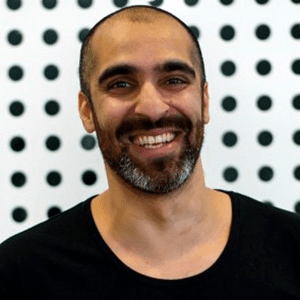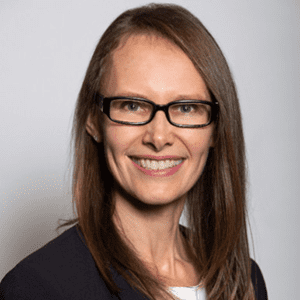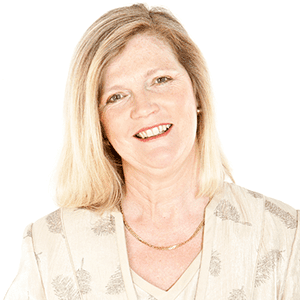

#55: Just be digital – Top tips on moving forward with digital transformation
Rob Kinkade, Co-Founder & CEO of FORMM Digital and Director of DuToday brings a cross-sector perspective to digital transformation and in simple terms, unpacks what it means for the future of business, small or large. Rob says ’It’s about having a lightweight, agile approach to digital, it’s no longer a set and forget.’
Rob gives great insights about how to go from idea to outcome with a great working example.
Rob and Stephanie Christopher, circle back at the end of this conversation with his top 3 tips to kick off digital transformation today. There are so many actionable insights in this podcast you’ll need to listen again and again.
In this episode you’ll hear:
• What digital transformation is and why it’s important for small businesses
• The importance of being agile and pivoting, especially in the formative phase of business
• Where to start – how to decide what platforms and technologies are right for you and your business
• Tips for a business owner to think about when considering embracing digital opportunities
Stephanie: Welcome to TEC Live. Stephanie Christopher here, CEO of the Executive Connection. We connect leaders with a trusted network of people who help them succeed.
Leah: Steph, I think the last couple of years has forced a lot of workplaces to talk about digital transformation, but I’m not really 100% sure exactly what the terminology means, so I’m glad that you’ve got a guest in here to explain things.
Stephanie: Good. Well, leave it with us, Leah, because I think with my guest Rob Kinkade, we will have a lot of answers for you today. Rob is the co-founder and CEO of Chasm Digital, as well as the director of Do Today. Rob’s focused on helping business leaders go from idea to outcome and accelerate their digital transformation to drive customer experience excellence. Rob has a big background. He’s worked with big companies across Australia and New Zealand, and I always love to say it, he hails from Seattle, so it gives you a bit of cool cred I think. Rob Kinkade, welcome to TEC Live.
Rob: Thanks, Steph. Awesome to be here.
Stephanie: Good to have you here. It’s a bit of a thing, digital transformation. I’m wondering for small businesses how important this really is, because they’ve just survived the last two years. Everything else is hitting them now. Why is this important for a small business?
Rob: I think there’s two key reasons. One, customers have changed fundamentally in terms of how they search, look for options to solving problems, look for ways to shop, consume, et cetera. That’s reason number one. The customers have just fundamentally changed in terms of their usage of digital technology to just run their day to day lives. Secondly, employees have changed dramatically, staff, and particularly with the next generation, the next kind of cohorts of the workforce entering, again, we’re digital natives, so they’re just expecting things to be swipeable, to be simple, intuitive, easy to use. You put them in front of a green screen and it’s a bit of a shock to their system, which isn’t a good thing in terms of how you run the shop and have an employee experience.
Stephanie: Why don’t we take a step back. I hear what you’re saying. Customers have changed, your people have changed, the world’s changed. What does digital transformation mean? I’m assuming there’s quite a continuum here.
Rob: Yeah, 100%. It’s very much multifaceted. A lot of people think of digital as marketing and obviously there’s lots of great things that digital does with reaching your audience more effectively, but our point of view and my personal point of view is that digital’s really about digital business and there’s at least eight different dimensions of digital that I like to really keep tabs on and thinking about it from a whole of business standpoint. Yes, how do you reach your audience, attract customers, retain customers, critical for any business. But the things you can do with improving your operations, your operational effectiveness, your cost management, using today’s digital technologies is really exciting and really cool.
Of course, when you think about things like delivery fulfillment, executing on arrangements in place with your customers, you can just do it so much more effectively and seamlessly using contemporary digital technology. That’s again, great for the team internal operations, but ultimately the customer experience is not just what’s experienced on the front end through a marketing campaign, but what’s really delivered at the end of the day. That’s really what leads that lasting impression that keeps those customers coming back and talking about your business, which drives that advocacy, which is super important.
Stephanie: Does this cost a lot of money?
Rob: It’s one of those how long is a piece of string questions? There’s certainly businesses that do need to invest a lot of capital to transform and become future fit, but I think the real winners in this space work out a very measured approach. They work out how to make sure they’re getting good returns with the spend that’s being put into a transformation and really identifying those quick wins that can drive some rapid ROI, and then really taking stock and reevaluating. We’re kind of in a different paradigm now. We like to say change is changed. It’s no longer about devising the big, grand strategy that’s going to be really hard for five years than out comes nirvana, because we know that ends in tears in a lot of cases. It’s really about having a lightweight, agile approach to getting going on some stuff that’s very concrete, very tangible, can show some results, build some confidence, build some digital DNA along the way, and then take on some of the bigger chunks once you’ve got that bow wave of momentum and make sure that the results and the returns are flowing through in a proportional way.
Stephanie: I love that, change has changed, because there was a whole body of work about change. It was a thing for sort of 25 years or so people have talked about. You’ve dropped in the word agile and a lot of people will know what that means, but just give us the one on one on how you can approach something like this with agile methodology.
Rob: Agile’s really just about starting small and really focusing on the most basic unit to prove or disprove ideas, theories, beliefs. So the idea is rather than trying to build a Taj Mahal before that anyone actually wants to go into a Taj Mahal, it’s about saying, ‘Well, let’s go build the smallest thing we can build to see if this is going to make our customers happier. If this going to help our employees have a better day on the job and do a better job. If the answer is yes, then let’s extend that out, let’s add some more features, let’s put some more data into it, let’s roll it out across the whole business.’ But it’s a really, really popular concept because it’s a great way to mitigate risk.
Stephanie: Starting small. Sounds good. Let’s apply this, all these concepts, to a real world kind of example. I’m giving you thinking time now before I ask my actual question so you can make one up or tell us of someone you’ve worked with, but how can you start small to make sure that your precious investment is worthwhile?
Rob: Yeah, it’s a great question. One of my other businesses that I’m a director of and chairperson for is BEERLOVE, which is … it’s kind of a high growth startup, if you will.
Stephanie: BEERLOVE.
Rob: BEERLOVE. One word. We’re trying to kind of change the vernacular.
Stephanie: Oh, right, okay.
Rob: But basically BEERLOVE is a disruptive play in the craft beer space and the idea is that there’s all these amazing independent craft beer breweries making great beer, but they can’t get their beer on tap at the corner pub because the pubs are locked up by the big beer companies, so there’s a real gap in the market. What we set out to do when we launched BEERLOVE was to really validate that yes, that there’s an audience out there that wants to have beer on tap in places where they can’t get it today. Beer on tap at home, beer on tap at the office, beer on tap maybe at the local pizza joint that they go to. So that was our core belief, but we needed to test it, we needed to build something to prove that. So we built what’s called an MVP, minimum viable product.
It’s a very basic website. We used kind of low code software tools to do it on the cheap. This was our own money we were investing. There was no business case for investment from investors at that point because we hadn’t proved anything. So we built a very low code MVP website, literally did the photo shoots, created the content ourselves in my business partner’s backyard with our wives and some friends, threw it together and launched it and started running some basic campaigns, even leaflet droplets into neighborhoods to see if people would come to our website and sign up. What we learned is they did and that was crossed in a number of different segments. We actually got a little bit more specific on what segments we’re going to have the most uptake.
Stephanie: Tell us what you mean by segments.
Rob: I guess the different customers we want to reach. There’s obviously the customer at home that’s more of a B to C, business to consumer, but we also discovered that businesses wanted to have beer on tap. It could be a law firm or a digital agency that wants to get people back into the office post COVID. It could be a big office in the CBD that’s just trying to create a great relaxed experience on Fridays. Some offices want to have a lot of clients for hosting, they want to have something that’s a little bit different than the competition. So we discovered that there was a high demand for beer on tap in those places. Once we got that validation and we were able to get a little bit more targeted on what parts of the market we could get the most traction with, then we could build that out and extend our capability and what technology we’re investing in to go win with those segments.
That gave us the information and the data to then go and raise investment funds, which is now been completed. Now we’re building out more advanced technologies, but we’re doing it with the confidence that we’re responding to what we’ve seen in the market as clear things that people want from us.
Stephanie: A few things here. One is though I say about innovation and entrepreneurship is solve your own problem. Your own problem was you wanted beer on tap, basically. You solved your own problem by coming out with a company.
Rob: 100%, and now I’ve got beer on tap in my basement, which is a bit of fun.
Stephanie: Onto that. Number two, we don’t normally have people sort of advertising their own wears on TEC Live, but I think it’s a really interesting story so we’ll keep going because it’s a good worked example. Number two is you started with the customer, you started by testing what people wanted. As you say, you wanted beer in your basement, but you didn’t know if anyone else did, so you were testing your assumptions early on before you went hard and invested a lot of money into it.
Rob: 100%. In fact, the current form of the business is what we call a pivot from the original idea, which we got out and tested and what we learned is that we didn’t actually have it right. What we thought was going to win with the market was okay, but we had some real clear insights that came out of those kind of early offerings. I said hold on, ‘We actually need to rethink this whole model and do that pivot,’ and that’s fundamentally changed what BEERLOVE’s all about today.
Stephanie: Right, and that’s an important thing when you’re embracing digital and digital transformation, that you can’t have a change project, like you said, that took five years with a whole lot of MBAs sitting in your boardroom to do it for you. That you actually have to move pretty quickly and if something’s not working, change or pivot very quickly.
Rob: Exactly.
Stephanie: Let’s take another example, something more broad. A small business owner who has survived the last two years and recognises this is a huge opportunity for growth and innovation and change and they’ve made some things, they’ve gone paperless or what have you. How would they start then with identifying what are the problems to start addressing from a digital perspective?
Rob: I think first and foremost, voice to the customer. We all hear the terms and the jargon, CX, customer insights, et cetera. In a lot of ways it can be a little bit more mysterious than it really needs to be. At the end of the day, it’s just get out of the office, go talk to your customers. Sure, do some surveys, capture some metrics. That’s super important. But if you can only do one or the other, I’d say just get out and talk to your customers and ask them how are we going? How are we meeting your needs? What else could we do for you? What would you love to have that we could put together? You’d be amazed because people are pretty straightforward and that’s super actionable. Of course, the other side to it is really harnessing all the smarts you got in house.
You’d be amazed at how many people work for a company and feel like they really don’t have much of a voice, a seat of the table around ideas and suggestions. When you actually give them that empowerment, you are going to just get some amazing, amazing ideas. Because they’re in the business, they know the business, but they also have lives outside of the business. They’re learning about things. They might have a second job where they’re exposed to different tools or technologies and they say, ‘Hey, why don’t we get rid of the whiteboards and use Trello boards. It’s always on. It’s in everyone’s pocket. I do this at my other job and it’s super simple.’ I think between the customers and the people that work within the business, you’ve got a war chest of insights. It’s just about tapping into it.
Stephanie: I really like it. The answer’s there, you just need to uncover them. Okay, so that’s the voice of the customer, some input and really good ideas from your own people. How do I know what technology am I going to start with?
Rob: That’s really one of the hardest things we find for most business leaders is just where do I start, because there are so many places you could go and there’s so much new things to learn about in course because we’re still in this kind of exponential technology curve. It’s changing every day. There’s different approaches to that. I think the first thing is to take stock. How digital are you today and across multiple dimensions of digital, not digital marketing, but digital business? Do a bit of a digital selfie, if you will, and really reflect on that. Then it’s really important to consider what do you want to do with digital? Do you want to be a bit more mature with your business and take your current business model and make it more accessible, more automated, et cetera for a bit of future proofing? Or do you have a bolder ambition?
We’re in this really disruptive period of time, we’re in the transformation from one age to the next and that’s when everything in the world changes. This window of time won’t be open forever. You’re seeing some amazing innovations in very traditional industries where people are saying, ‘Look, there’s a better way to get building supplies out to the job site. If I can get this amazing meal experience on Uber Eats, why can’t a builder have something very similar to help them be more productive on the job site?’ It’s just a really exciting point in time and the art of the possible is … it’s all there, but it’s about really envisioning what that could look like and then working out what’s the transferable capability from the primary business to go do it and does that stack up? Then, of course, can you do both at once? But for those that can, there’s some amazing, I think, wealth creation opportunities in the market.
Stephanie: First of all, let’s make a decision. Is it digital maturity that you want to focus on or is it absolute innovation and transformation?
Rob: Exactly.
Stephanie: Can you do nothing?
Rob: I think that’s a very risky path to take because the competition’s changing dramatically. The markets are changing, entry lines are being blurred. Doing nothing I think is highly risky in today’s environment.
Stephanie: Do you have to start with maturity, or can you launch straight into a big, bold ambition?
Rob: Exactly. Exactly. If you look at … Netflix is a good example, this is going back a ways, but they didn’t-
Stephanie: When Netflix was doing well.
Rob: Yeah. Sorry, maybe not the best example this week. But then again, most tech stocks are taking a bit of a hit this week. Look at Amazon as another good example. But I think Netflix didn’t set out to build the better version of Blockbuster. They set out to really fundamentally change how people find and discover entertainment in movies and shows and get that fulfilled to them directly. That’s been incredibly disruptive. We all know the story behind that. To answer your question, I think that’s a really simple example.
Stephanie: Can you do it in an established business, in a legacy business? Can you take that leap into something very ambitious from a somewhat standing start?
Rob: Yeah, 100%. We’re working with a couple different businesses on the Chasm Digital side where they’re traditional businesses that have been very successful, but the owners, the operators, have realised, ‘Look, the world is changing and we want to get on the front foot, we want to go get some opportunity and we don’t want to be disrupted, so let’s digitize a little bit with the current business, but let’s really go create something bold and new and tap into the wealth of information about the industry, the domain expertise, the supply chain, the network around the sector, and go do something that someone who’s a brilliant technologist coming out of uni could never do because they just don’t have not only the business nous, but they don’t really understand what makes the industry tick.’
Stephanie: I can think of examples also of people embracing something digital and it being set and forget. ‘Well, I’ve done that bit, but it didn’t really work.’ You have to review and iterate and keep developing, don’t you? You can’t just say, ‘I’ve made this digital change. Phew.’
Rob: You’re spot on, Steph. It goes back to what we said a few minutes ago, change has changed. A lot of businesses have put in new kind of accounting packages or maybe supply chain systems or ERP systems. A lot of that’s been set and forget. You do the heavy lifting and then you amateurize it over eight to 10 years and then you think about it again. With digital, two things are happening. One, the technology is evolving dramatically and that’s not going to slow down anytime soon. But also the customer expectation, the customer needs are evolving dramatically. It’s really about being able to respond to that and kind of an always on capability. Not to use a whole bunch of buzzwords and jargon, but we talked about the word agile before, that’s really a big part of it. It’s create a small team of people that work together in a very agile way. The term that a lot of people use is multidisciplinary.
It’s not got the business and IT and they’re in two different corners of the room and seldom do they meet. It’s really about putting the person who’s got the business insight and expertise and the commercial perspective right next to the developer, and it’s working through it together. It’s really exciting because it really breaks down some of the barriers and silos and just gets to an answer much, much quicker. But the point is a lot of businesses put those teams in place and they’re an ongoing unit and they’re constantly, every two weeks, every month, putting changes out to drive more and more value.
Stephanie: Interesting. Okay. So we’ve heard a lot. We’ve heard change has changed. We’ve heard digital maturity versus ambition, transformation. We’ve heard start with your customers, start with your team, multidisciplinary teams are the way to go. Nothing new there. I want three top tips for a business owner to think about when they’re considering embracing digital opportunities right now.
Rob: Just to build on some things we’ve talked about already, those can be a bit repetitive, I think number one it’s start with the customer. If you don’t understand what the customer wants and needs and deliver it to them in a great way, you are not going to be in business for long. That’s a truism and you look at other businesses that’ve been around for a long time. I’ve got a lot of experience with Nordstrom where I started my career in Seattle who’s, I think, one of the best examples on the globe of taking a very traditional business, been around for 100, 140 years, I believe, but actually embracing digital and really changing the business to keep pace. But Nordstrom never loses sight of the customer.
Stephanie: Famously. So start with the customer.
Rob: Yeah, I think that’s number one. I think number two is consider the whole of business perspective. Again, kind of a little bit repetitive back to that point of it’s not digital marketing, it’s digital business. Think about all aspects of your business, think holistically, and really look for those opportunities to drive some real value leveraging digital technology. I think number three, I’d say this is a little bit more esoteric, but I’d say just be digital. We had this paradigm for many years thinking business, it was kind of business versus IT or business and IT that left a lot of opportunity on the table. I think it’s really important for people to break down those barriers, just get the sleeves rolled up, get right into the muck, learn the new jargon, learn the new lingo, and really understand what’s happening under the hood.
I think most importantly as a business leader, embrace it. I mean, I think we all use Uber now, but I remember even five years ago, so many people were still, ‘Hey, I’m going to get a cab,’ or, ‘Oh, our policy says we can’t use Uber.’ I mean, I was even part of a project with my former employer, EY, where we said, ‘Well, what if we did a lot of our business travel and used Airbnb,’ and it turned out we could save 30%, 40% and you apply that across a multi-billion, multi-country global company. It’s pretty exciting in terms of the value opportunity, but I think more importantly it’s just about being digital and then getting that ideation that says, ‘Well, actually, what if we did a little bit of that for our monthly sales and operations planning process and we had kind of real time data and we didn’t have to wait for the meeting? We actually had things happening in advance and we solve problems a week or two quicker.’
Stephanie: Nice. Really good. Okay, so number one, start with customer. Number two …
Rob: Number two is whole of business.
Stephanie: That’s right, whole of business, and number three, be digital. I love it. What a great sort of slogan to end.
Rob: Be the change.
Stephanie: Be the change. I’ve heard that one. I like it. A lot of interesting concepts and I really like the way that you’ve broken them down to their basic elements and it makes a lot of sense. Rob Kinkade, thank you so much for joining us.
Rob: Thanks, Steph. Thanks for having me. It’s been awesome.
Stephanie: Discover more about TEC at tec.com.au.



